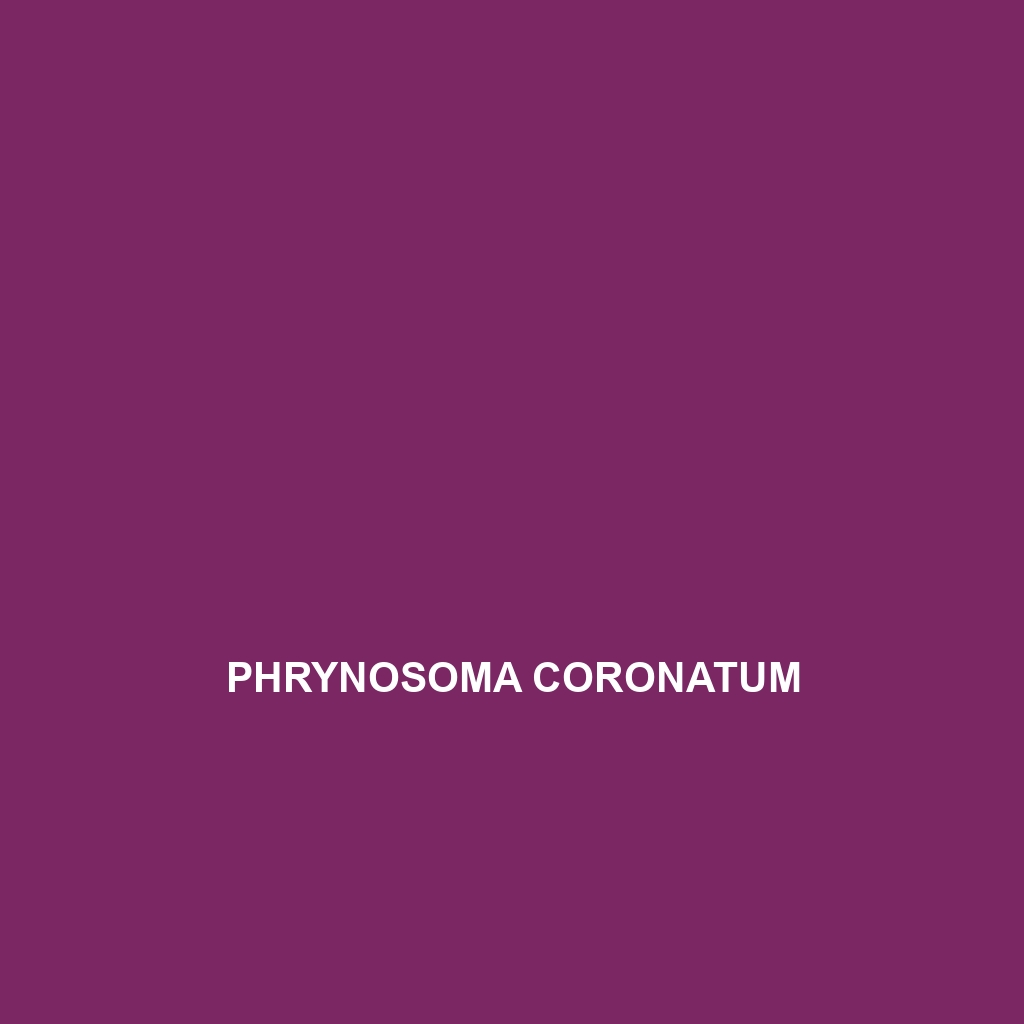Common Name
Phrynosoma coronatum
Scientific Name
Phrynosoma coronatum
Habitat
Phrynosoma coronatum, commonly known as the round-tailed horned lizard, is primarily found in the arid and semi-arid regions of the southwestern United States and parts of northern Mexico. This species is prevalent in habitats that include deserts, grasslands, and open scrublands. The round-tailed horned lizard thrives in environments characterized by warm temperatures and low moisture levels. These lizards tend to prefer sandy or loose soil and areas with sparse vegetation, which provide adequate cover from predators and assist in thermoregulation. During the daytime, the round-tailed horned lizard seeks shelter under rocks or in burrows to escape the extreme heat often present in their habitat.
Physical Characteristics
The round-tailed horned lizard exhibits several distinctive physical traits. Adult Phrynosoma coronatum typically measures between 2.5 to 4.5 inches in length. They possess a flattened body shape with a broad, triangular head and can easily be recognized by their appendages, often referred to as “horns,” which are small projections above their eyes. The coloration of these lizards ranges from pale brown to gray, often with unique patterns that assist in camouflage against the sandy substrates of their habitats. One striking physical adaptation of Phrynosoma coronatum is its ability to change color slightly based on environmental conditions, providing further protection from predators.
Behavior
Phrynosoma coronatum exhibits several fascinating behaviors that are crucial for its survival. Typically, these lizards are solitary creatures, although they may be seen basking in the sun during warmer months or congregating during the breeding season. They are primarily diurnal, becoming most active in the early morning and late afternoon when temperatures are more moderate. During hotter periods, they tend to hide and avoid direct sunlight, demonstrating a notable adaptation to their arid environment. One particular behavior that garners interest is their ability to “play dead” when threatened by predators, an instinctive defense mechanism that can deceive potential threats.
Diet
Phrynosoma coronatum is primarily an insectivore, feeding mainly on a diet of ants, beetles, and other small invertebrates. These lizards have a rapid feeding mechanism, utilizing their quick reflexes to snap up prey that comes within striking distance. They are known to forage actively during the cooler parts of the day, seeking out patches of vegetation where ant colonies and other insects tend to be abundant. Although primarily insectivorous, there are occasional observations of these lizards consuming small plants or flowers, indicating some level of omnivorous behavior.
Reproduction
The reproductive cycle of Phrynosoma coronatum typically occurs between late spring and early summer, with males performing elaborate courtship displays to attract females. The mating process is characterized by vigorous head-bobbing and pushing behaviors. After copulation, females undergo a gestation period of about 6 to 8 weeks before laying their eggs. Clutch sizes can vary, but females commonly lay clutches of 6 to 20 eggs in sandy nests that they excavate in the ground. After the eggs hatch, the juvenile lizards are independent and receive no parental care, demonstrating a reproductive strategy aimed at maximizing survival through sheer numbers.
Conservation Status
According to the IUCN Red List, Phrynosoma coronatum is currently classified as Least Concern. However, habitat destruction and climate change pose ongoing challenges to their populations. Urban development, agriculture, and changes in land use have led to the degradation of their natural habitats. Conservation efforts are necessary to ensure that their populations remain stable and that key habitats are preserved. Localized conservation initiatives aim to monitor populations and protect critical habitats that support the species.
Interesting Facts
One of the unique features of Phrynosoma coronatum is its ability to adopt a flattened posture, which not only aids in thermoregulation but also enhances its camouflage while remaining motionless. Additionally, these lizards have a fascinating defense mechanism where they can squirt blood from the corners of their eyes as a way to distract and deter predators. This unusual adaptation is both surprising and effective, leading to the lizard’s nickname as the “horned toad.” Their remarkable ability to blend into their surroundings showcases the incredible diversity of survival tactics in reptiles.
Role in Ecosystem
Phrynosoma coronatum plays a vital role in its ecosystem. As an insectivore, it contributes to controlling insect populations, particularly ants and beetles, which can impact plant health and soil quality. Through their feeding habits, these lizards also help to maintain the balance within their habitats, acting as both predator and prey. They serve as a food source for larger predators, further integrating them into the food web. Through their interactions with the environment, Phrynosoma coronatum represents a key component of the biological community in arid and semi-arid regions.
